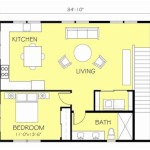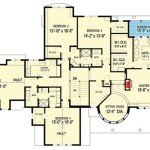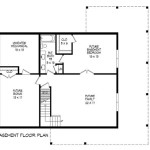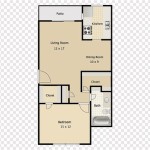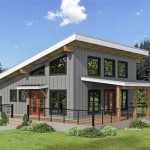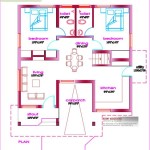Arts and Crafts Style Floor Plans
The Arts and Crafts movement emerged in the late 19th and early 20th centuries, emphasizing simplicity, functionality, and a connection to nature. This aesthetic philosophy extended to architecture, resulting in the distinctive Arts and Crafts style floor plans.
Key Characteristics of Arts and Crafts Floor Plans
- Open and Flowing: Rooms often transition seamlessly into one another, creating a sense of spaciousness and cohesion.
- Natural Light: Large windows and skylights maximize natural light, connecting the interior to the outdoors.
- Built-In Features: Custom-built cabinetry, window seats, and fireplaces serve both aesthetic and practical purposes.
- Craftsmanship and Detail: Intricate woodwork, leaded glass, and hand-crafted details embody the movement's focus on artistry.
- Connection to Nature: Floor plans often incorporate outdoor living spaces, such as porches, patios, and gardens.
Types of Arts and Crafts Floor Plans
Arts and Crafts floor plans vary in size and layout, but some common types include:
- Bungalow: Single-story homes with low-pitched roofs, wide porches, and open floor plans.
- Craftsman: Larger homes with two or more stories, steeply pitched roofs, and porches or patios.
- Prairie: Horizontal emphasis with long, low roofs, overhanging eaves, and bands of windows.
- Four-Square: Symmetrical and boxy homes with four square rooms on each level.
Benefits of Arts and Crafts Floor Plans
- Natural Beauty: The connection to nature and emphasis on natural materials create a calming and inviting atmosphere.
- Functionality: Open floor plans and built-in features enhance livability and convenience.
- Historical Charm: Arts and Crafts homes have a timeless aesthetic that appeals to those who appreciate history and architecture.
- Flexibility: Floor plans can be customized to suit individual preferences and lifestyles.
- Investment Value: Well-maintained Arts and Crafts homes retain their value and desirability over time.
Considerations for Arts and Crafts Floor Plans
- Maintenance: Intricate details and natural materials may require regular upkeep.
- Indoor-Outdoor Connection: Favorable weather conditions are essential to maximize the benefits of outdoor living spaces.
- Historical Restrictions: Some historic districts have strict guidelines regarding alterations to existing Arts and Crafts homes.
- Cost: Custom details and high-quality materials can add to the overall cost of construction.
- Energy Efficiency: Original Arts and Crafts homes may not meet modern energy standards, requiring upgrades for improved efficiency.
Conclusion
Arts and Crafts style floor plans embody the movement's commitment to beauty, functionality, and harmony with nature. Whether for a charming bungalow or a majestic Craftsman home, these floor plans offer a timeless aesthetic that continues to inspire homeowners today.

Bungalow Floor Plans Style Homes Arts And Crafts Bungalows Craftsman House

Craftsman Style House Plans Big And Small Houseplans Blog Com

Craftsman Style House Plans With Bungalow Features

House Floor Plans 1910s 1930s Bungalow Craftsman

Bungalow Floor Plans Style Homes Arts And Crafts Bungalows House

The Varina 1920s Bungalow 1923 Craftsman Style From Standard Homes Company Hous House Plans

1922 Craftsman Style Bunglow House Plan No L 114 E W Stillwell Co

Informally Elegant 4 Bed Craftsman Style House Plan 710069btz Architectural Designs Plans

Affordable Exclusive Craftsman Style House Plan 9081

Durham Drive Craftsman House Plans Ranch


